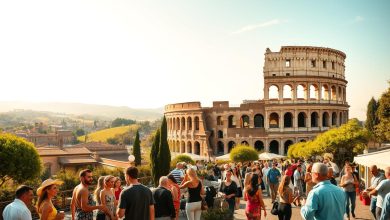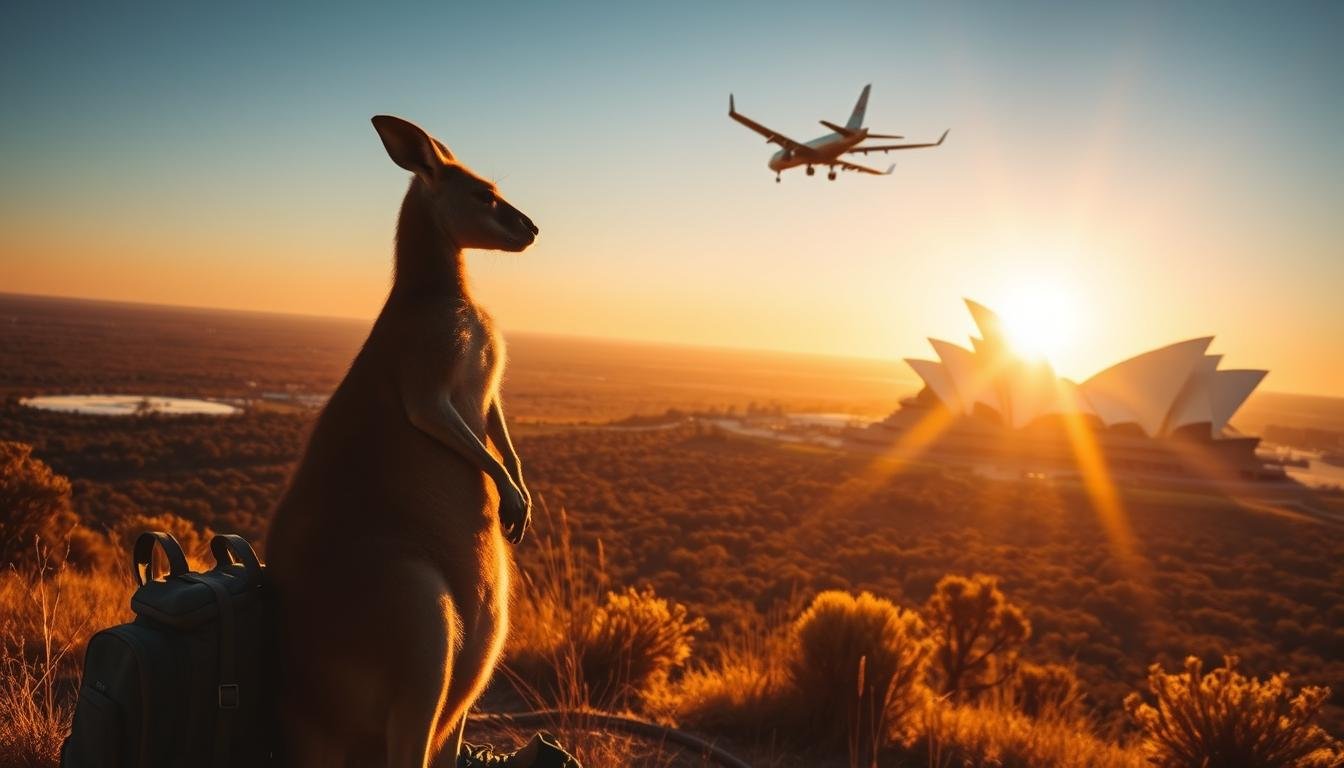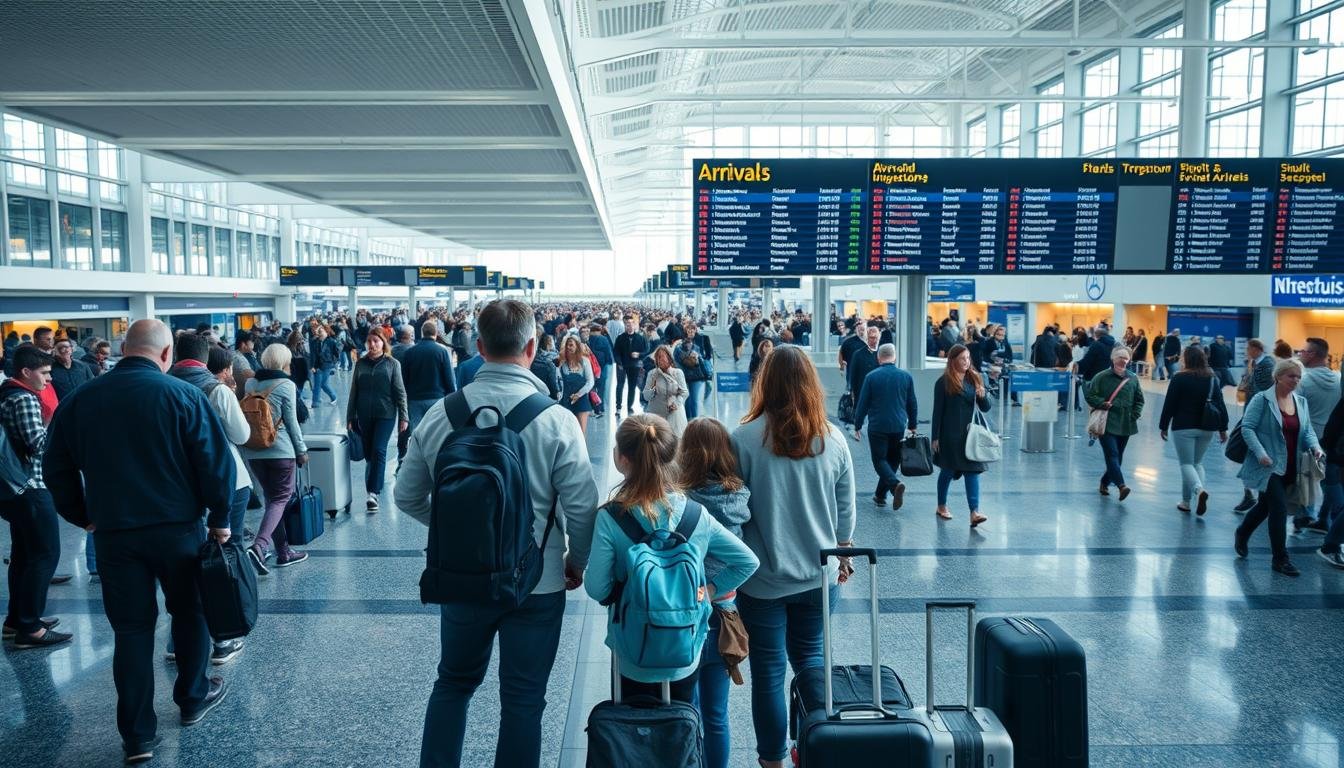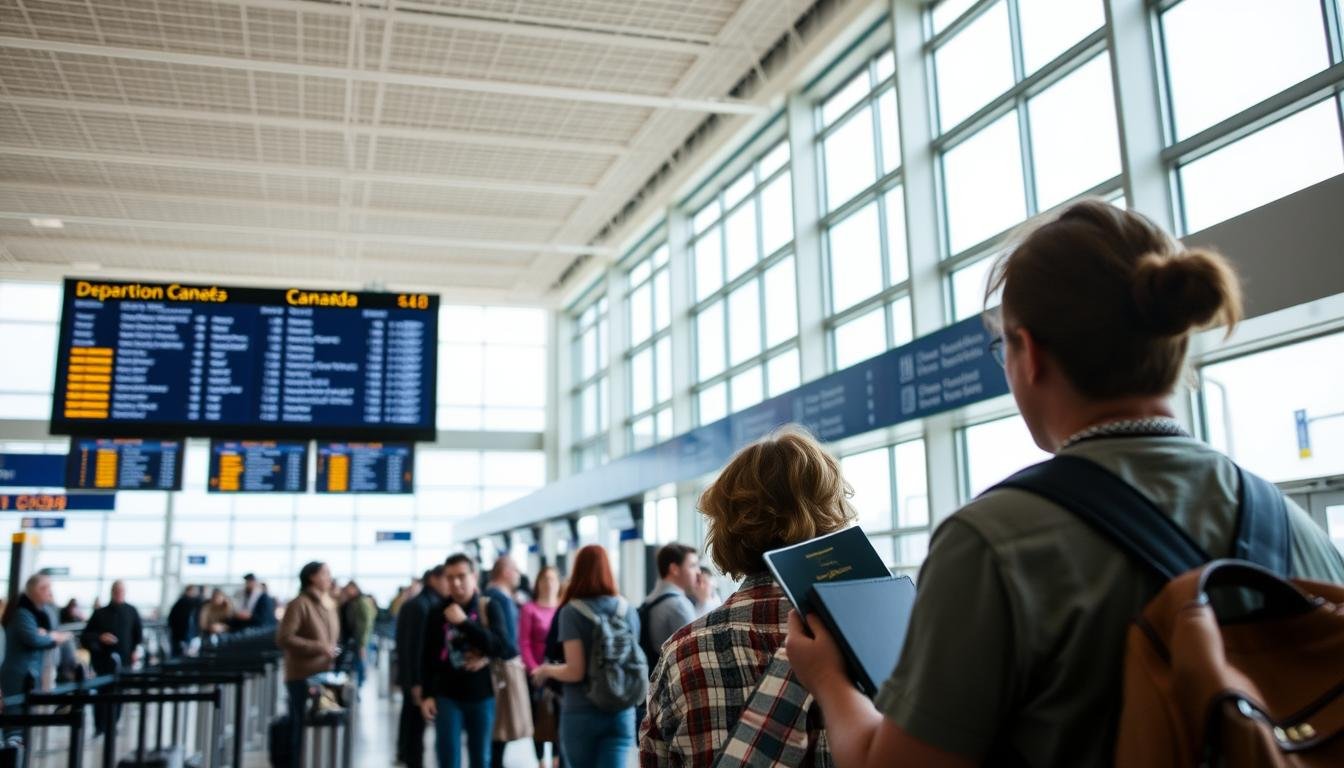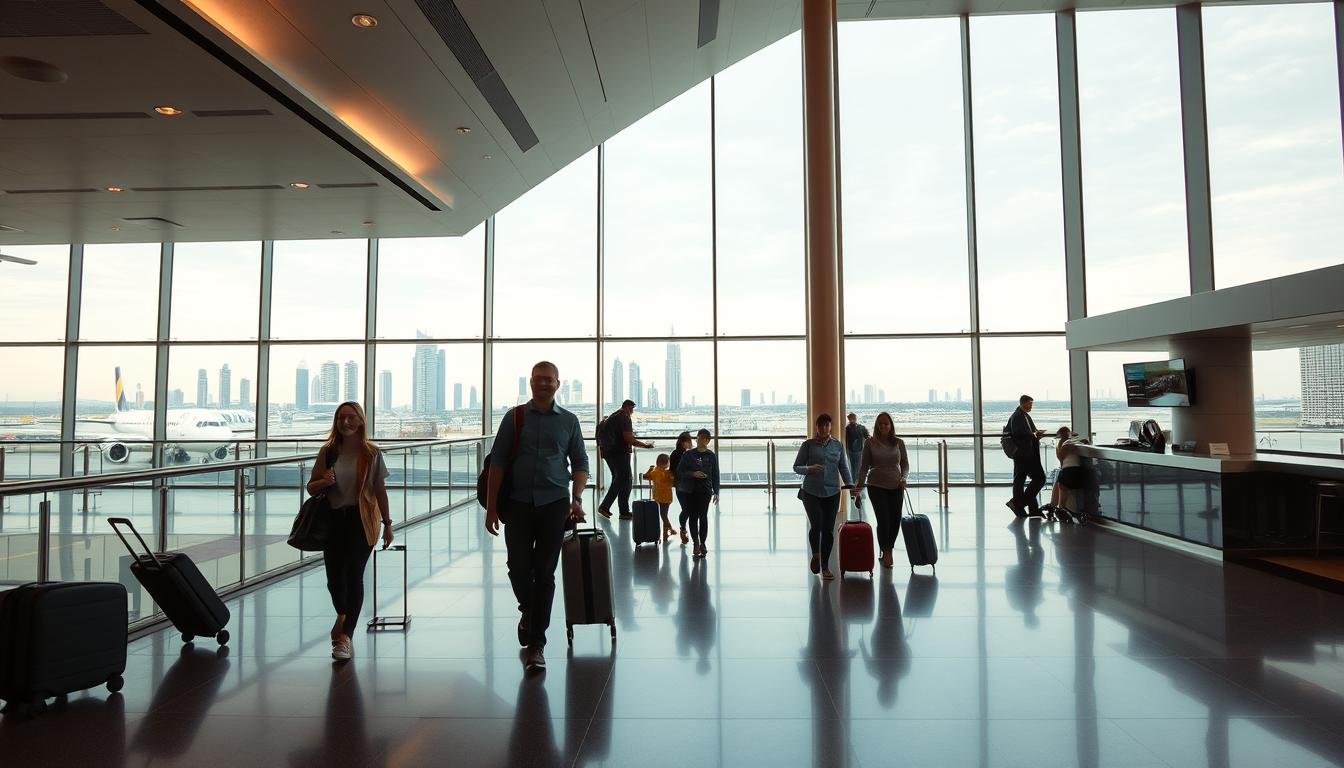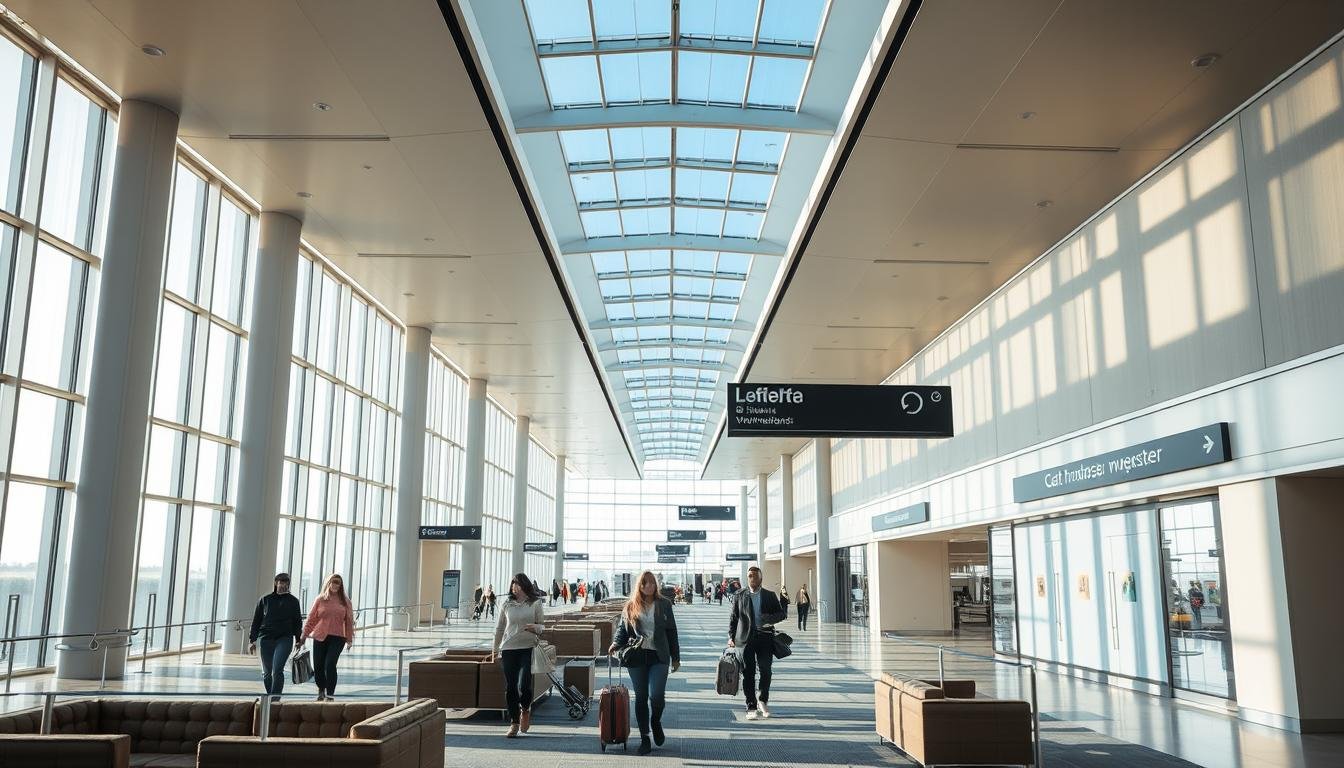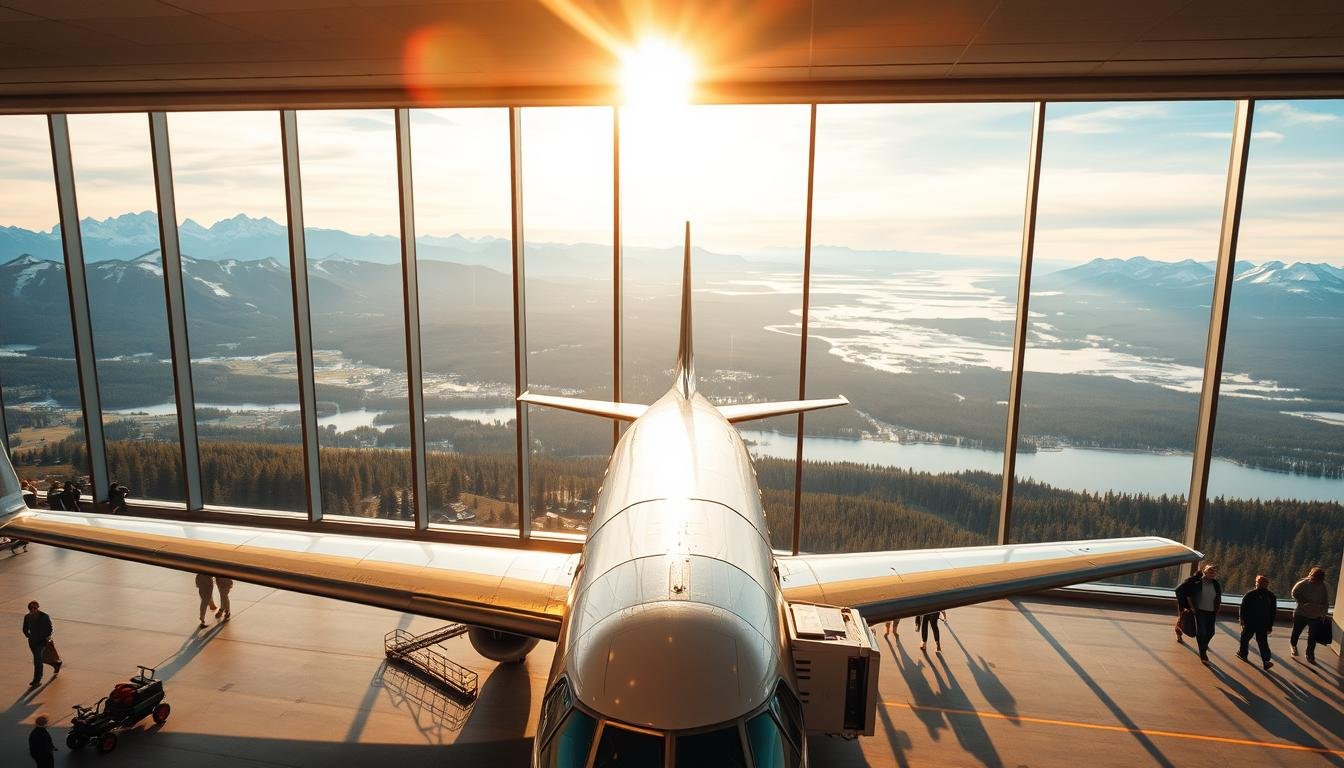Essential Travel Tips for Norway: Key Benefits and Advantages for a Smooth Journey
Anúncios
Norway’s dramatic landscapes and efficient infrastructure make it a bucket-list destination.
Anúncios
First-time visitors often marvel at its seamless public transit, which connects vibrant cities to serene fjords and mountains. Friendly locals and well-mainured trails enhance the experience, creating adventures that linger in memory long after departure.
Anúncios
Budget-conscious explorers should note that this Scandinavian gem ranks among the world’s priciest destinations. Strategic planning—like prioritizing free outdoor activities or opting for seasonal discounts—helps stretch funds further. A well-researched itinerary balances must-see attractions with cost-effective alternatives.
Seasonal shifts dramatically shape trips here. Summer brings endless daylight for hiking under the midnight sun, while winter offers northern lights viewing and snow sports. Timing a visit around these natural phenomena ensures unforgettable moments.
Preparation transforms a good trip into an extraordinary one. Understanding local customs, weather patterns, and transportation quirks minimizes stress. With thoughtful planning, travelers unlock Norway’s full potential without overspending or missed opportunities.
Introduction to Norway Travel Insights
Norway captivates millions yearly with its seamless fusion of modern innovation and raw wilderness. Visitors discover architectural marvels like Oslo’s angular opera house alongside UNESCO-protected fjords carved by ancient glaciers. This duality creates a playground for urban explorers and nature enthusiasts alike.
- Costs exceeding typical European averages for dining and lodging
- Weather patterns requiring adaptable packing strategies
- Cultural norms favoring quiet appreciation over overt enthusiasm
Smart explorers study regional customs before arrival. Simple gestures like removing shoes indoors or avoiding loud conversations on public transport show respect for local values. Many first-time visitors underestimate how wilderness accessibility balances with premium pricing – quality campsites often rival hotel rates.
Seasonal planning proves crucial. Summer’s endless daylight enables midnight hikes, while winter demands expertise in layering for -20°C aurora viewings. Reliable travel guides stress booking ferries and mountain cabins months ahead, especially for popular routes like Trolltunga.
Understanding these dynamics helps travelers craft itineraries that honor Norway’s environmental ethos while maximizing their experience. From Oslo’s design districts to Svalbard’s polar expanses, preparation unlocks the country’s full potential.
Planning Your Trip: Timing and Seasonal Tips
Seasonal rhythms dictate the best moments to experience Norway’s natural wonders. Outdoor enthusiasts face narrow activity windows, with summer’s warmth and winter’s aurora magic demanding precise scheduling.
Maximizing Summer Adventures with the Midnight Sun
June through August transforms the landscape into a playground for hikers and rafters. The midnight sun stretches daylight to 20+ hours, allowing extended exploration of trails like Besseggen Ridge. Over 30,000 adventurers tackle this iconic route in just two months – book cabins and ferries early.
“Summer here isn’t a season – it’s a race against the calendar.”
White-water rafting on the Sjøa River and coastal cycling routes vanish by September. Regional tourist offices update trail conditions weekly, helping visitors avoid sudden storms.
Embracing Winter and the Northern Lights
November to March swaps hiking boots for skis as snow blankets the north. Clear, cold nights offer prime northern lights viewing, though temperatures plunge below -20°C. Key considerations:
- Dog sledding and snowmobiling require stable snowfall
- Aurora forecasts dictate optimal viewing nights
- Mountain lodges fill fast during holiday weeks
Whether chasing summer’s endless light or winter’s celestial displays, aligning plans with nature’s timetable ensures safety and access. Check regional websites monthly for activity updates.
Travel Tips Norway for Budget-Friendly Adventures
Exploring this Scandinavian destination doesn’t require emptying savings accounts. Savvy visitors balance indulgence with smart resource management, turning premium experiences into affordable memories.
Dining on a Dime: Affordable Food Options
Main courses averaging 500 NOK challenge budget-conscious diners. Locals know hotel breakfast buffets often outshine restaurants – piled-high salmon, cheeses, and fresh bread keep energy high until sunset. Many properties include these spreads in room rates.
- Gas station hot dogs (under 40 NOK) offer quick protein boosts
- Supermarkets like Rema 1000 sell ready-made meals for picnic lunches
- Fish markets provide smoked salmon samples at no cost
Cafes slash lunch prices by 30% compared to dinners. Bergen’s Pingvinen and Oslo’s Kaffistova serve traditional fare at midday discounts.
Smart Booking: Securing Deals on Transport and Hotels
Early planners reap rewards. Train tickets booked 90+ days ahead sometimes drop below bus fares. Consider these tactics:
- Bundle flights and hotels through sites like Nordic Choice
- Use Vy app’s “Minipris” for last-minute train seat auctions
- Target city-center hostels with kitchen access
Loyalty programs matter. Thon Hotels’ membership cuts room rates 15%, while SAS EuroBonus points upgrade regional flights. Midweek stays often cost less than weekend bookings.
Navigating Norway’s Transportation Network
Efficient connections and breathtaking routes define how visitors explore this Scandinavian nation. The transport system blends modern engineering with nature’s grandeur, creating journeys as memorable as destinations themselves.
Booking Train and Bus Tickets Online
Securing affordable fares requires strategy. Norwegian State Railways releases limited minipris tickets months ahead, often slashing prices by 50%. Budget-conscious travelers target these deals early, especially for popular routes like Oslo-Bergen.
- Vy app’s auction feature offers last-minute seat discounts
- Lavprisekspressen buses connect cities at rock-bottom rates when booked online
- Regional passes unlock unlimited travel within specific zones
Scenic Drives, Ferries, and Local Routes
Road trippers discover engineering marvels around every bend. The Atlantic Ocean Road’s wave-kissed bridges and Laerdal Tunnel’s 24.5km passage showcase human ingenuity against rugged landscapes.
- Ferries glide past fjord walls during essential coastal transfers
- Mountain passes like Trollstigen demand cautious driving at 40-60km/h
- Electric vehicle charging stations dot major highways
Route planners should consult the National Tourist Routes guide for pit stops at architect-designed viewpoints. These curated paths transform ordinary drives into artistic experiences.
Exploring Iconic Attractions and Hidden Gems
Norway’s cities weave architectural ambition with untamed landscapes, creating spaces where marble facades meet mountain vistas. Urban explorers discover attractions blending cutting-edge design with deep-rooted traditions. This balance defines experiences from Oslo’s sleek cultural hubs to Bergen’s UNESCO-protected docks.
From the Opera House to the Royal Palace
Oslo’s angular Opera House redefines public spaces. Visitors traverse its sloping marble roof for 360-degree fjord views before descending into world-class ballet performances. Over 1.4 million people climb this landmark annually, proving art and nature coexist seamlessly here.
The Royal Palace offers guided tours through gilded halls where monarchs shaped national identity. Guides share stories of coronation ceremonies and royal hunts, connecting visitors to 200 years of Scandinavian history. Time entry tickets ensure intimate group sizes during summer months.
- Bergen’s Bryggen district: Colorful Hanseatic warehouses now house artisan shops
- Trondheim’s Nidaros Cathedral: Gothic masterpiece built over Viking burial grounds
- Alta Museum: Open-air exhibits showcasing 6,000-year-old rock carvings
Beyond major cities, hidden treasures await. Urnes Stave Church’s dragon carvings whisper Norse legends, while Røros’ copper-mining cottages preserve 17th-century life. Locals often recommend lesser-known gems like Henningsvær’s football field – a coastal pitch surrounded by crashing waves.
“Our landmarks aren’t frozen in time. They’re stages where past and present perform together.”
History enthusiasts find layered narratives at every turn. From Sami cultural centers detailing Arctic traditions to WWII resistance museums in mountain caves, attractions reveal how Norwegians shaped their identity against dramatic backdrops.
Cultural Insights and Local Etiquette
Norwegian culture balances urban openness with rural traditions, creating distinct social landscapes. Visitors often notice how behavior expectations shift between bustling hubs and quiet villages. Respectful engagement unlocks deeper connections with communities across the country.
Understanding Norwegian Social Norms
Locals in cities like Oslo or Bergen embrace casual interactions. Public spaces thrive on mutual respect – loud conversations draw subtle glances, while orderly queues reflect shared values. One resident notes: “We value harmony over hustle. Let the scenery speak louder than your voice.”
Rural areas follow different rhythms. Villages prioritize quiet coexistence, where late-night noise disrupts communal peace. Travelers attending summer festivals should avoid extending celebrations into residential zones. The story behind these norms traces back to Norway’s close-knit farming heritage.
Key secrets to blending in:
- Maintain personal space in queues and public transport
- Remove shoes when entering homes – a universal expectation
- Discuss outdoor adventures before politics or personal finances
Environmental consciousness shapes daily life. Locals appreciate visitors who follow recycling rules and stay on marked trails. This unspoken pact between people and nature strengthens Norway’s pristine landscapes.
Safety and Preparation: Essential Guidelines
Exploring safely requires balancing preparation with adaptability. While ranked among Europe’s safest destinations, basic precautions ensure smooth experiences. Urban areas like Oslo’s shopping districts see occasional pickpocket activity – keep phones secured and avoid flashing expensive cameras.
Packing Smart: Weather Gear and Nighttime Essentials
Norway’s climate demands layered solutions. Waterproof jackets and moisture-wicking base layers handle sudden showers, while thermal socks combat mountain chill. For summer visits, sleeping becomes challenging under midnight sun – pack a compact eye mask despite hotel blackout curtains.
Essential items for any itinerary:
- Portable water filter for refilling from streams
- Power bank to keep phones charged during hikes
- High-calorie snacks like nuts or energy bars
Staying Alert: Monitoring Conditions and Updates
Weather shifts rapidly, especially in fjord regions. Tourists checking Yr.no forecasts three times daily avoid getting caught in unexpected storms. Local guides emphasize: “Your best photos come from staying alive first – turn back if clouds gather.”
Share detailed plans with accommodation staff before wilderness treks. Many hotels provide emergency contact forms. For winter nights, carry headlamps with red-light modes to preserve night vision during northern lights viewing.
Conclusion
Crafting a memorable Scandinavian journey hinges on balancing preparation with spontaneity. By aligning plans with seasonal rhythms and cultural nuances, visitors unlock experiences that transcend typical tourist checklists. This guide serves as a roadmap to navigate premium costs and logistical puzzles, turning potential stressors into stepping stones for discovery.
The magic of this destination reveals itself through layered details – a well-packed bag for sudden weather shifts, advance bookings securing scenic train seats, or knowing when to swap city tours for fjordside picnics. These thoughtful choices become part of every traveler’s story, shaping adventures that resonate long after departure.
Ultimately, the region’s allure lies in its duality: raw natural beauty meets meticulous infrastructure. Visitors who embrace both elements – through researched lists and flexible itineraries – maximize their investment. Let preparation be the compass, not the cage, as you write your own chapter in this land of northern lights and midnight sun.
For more information, see the official travel site:
You will be redirected to another website
FAQ
When is the best time to see the northern lights?
The northern lights are most visible between late September and March, especially in northern regions like Tromsø. Clear, dark skies and minimal light pollution increase chances of sightings.
How can travelers experience the midnight sun?
Between May and July, areas above the Arctic Circle, such as Svalbard, enjoy 24-hour daylight. Hiking, fjord cruises, or city walks in Oslo become magical under the never-setting sun.
Are there budget-friendly food options in cities like Bergen or Oslo?
Street food markets, local bakeries, and grocery stores like Rema 1000 offer affordable meals. Many cafés serve inexpensive “dagens rett” (daily specials) during lunch hours.
What’s the most efficient way to book train tickets?
Vy (Norwegian Railways) and Entur apps allow online bookings for routes like the Bergen Railway. Early reservations often secure lower prices, especially for popular scenic journeys.
Which hidden gems are worth visiting beyond Oslo’s Opera House?
The Lofoten Islands, Jotunheimen National Park, and the Atlantic Ocean Road provide stunning landscapes. In cities, the Vigeland Sculpture Park and Trondheim’s Nidaros Cathedral are must-sees.
How do locals typically greet visitors?
Norwegians value personal space and often greet with a handshake or nod. Learning phrases like “takk” (thank you) and respecting quiet moments in public spaces is appreciated.
What essentials should one pack for winter trips?
Thermal layers, waterproof boots, gloves, and a reflective armband for dark evenings are crucial. A portable charger helps during outdoor activities in cold weather.
Are ferries reliable for coastal exploration?
Yes. Companies like Hurtigruten offer scenic coastal routes. Ferries connect fjords and islands, with timetables available on Fjord1 or local tourism websites.
Can tourists drink tap water in cities?
Norway’s tap water is safe and often considered among the cleanest globally. Reusable bottles are eco-friendly and cost-effective compared to buying bottled water.
How do weather apps assist with outdoor plans?
Yr.no provides hyperlocal forecasts, including northern lights alerts. Checking avalanche warnings or trail conditions on UT.no is vital for hiking or skiing adventures.
Published on: 24 de July de 2025

Sofia Kamara
Sofia Kamara is the founder of GoldenCred.blog, a platform built to guide students and young professionals in navigating international opportunities. With a background in public policy and international relations, Sofia has spent years helping people secure scholarships, sponsorship visas, and financial planning strategies for studying abroad.
She believes that accessible, accurate information is a powerful tool for change. Her writing combines practical advice with strategic insights, crafted especially for those eager to take bold steps toward education and career development in countries around the world.

